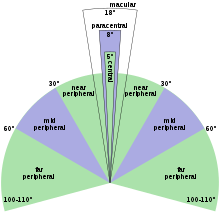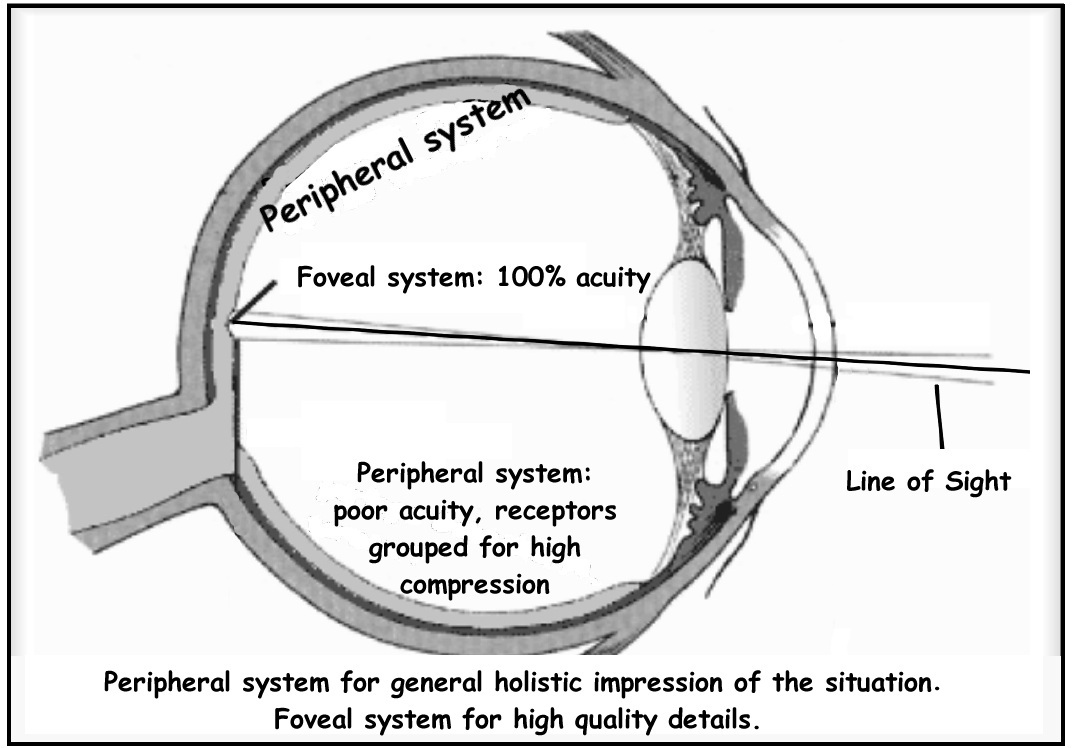Peripheral vision loss can also affect your ability to see objects above or below your central vision. Loss of side vision can create obstacles in your daily.
Unlike many conditions that affect both eyes glaucoma can cause the loss of peripheral vision in one eye.
Loss of peripheral vision in right eye. Causes of Tunnel Vision Peripheral vision loss can be caused by eye diseases eye injuries or other injuries and conditions that occur outside of the eye. Vision loss is usually the result of an eye condition injury to the eye or both. Fundamental causes of peripheral vision loss in one eye for example.
Normally the left half of your brain receives. Peripheral vision loss PVL occurs when you cant see objects unless theyre right in front of you. Sudden Loss of Vision in One Eye Sudden vision loss could signal a number of eye diseases and conditions.
When someone loses peripheral vision in all directions it is usually called tunnel vision. Neurological damage such as from optic neuritis. What Causes Peripheral Vision Loss.
It is also termed as tunnel vision. Sometimes peripheral vision gets affected due to age-related issues or some eye disease leading to peripheral vision loss. While this is not a significant part of his field of vision there are adjustments you will have to make.
The American Academy of Ophthalmology AAO says peripheral vision loss also called tunnel vision can be caused by the following conditions. Glaucoma is a group of eye conditions that cause abnormally high pressure within the eye which damages the optic nerve. This is called a vitreous hemorrhage.
A common cause of loss of peripheral vision also called a peripheral field defect is optic nerve damage from glaucoma. You may lose peripheral vision on one or both sides of your visual field. These can range from something minor and temporary to more serious conditions including.
This is also known as tunnel vision. Peripheral vision loss is the loss of your ability to see things to the side or up and down from your central vision the line of sight directly in front of you. Eye strokes or occlusions.
Most of the time loss of peripheral vision is referred to as a visual field cut meaning that you cant see one side of vision from one of your eyes or you cant see one side of vision from both of your eyes. Diabetic Retinopathy High blood sugar can damage the small blood vessels in the retina which is the area of the eye that senses light. Peripheral vision loss is the deterioration of your normal wide-angle field of vision.
A stroke or injury also may damage portions of the brain where images are. It can affect your daily life activities and can create difficulties for you to see properly at night. Hemianopsia is a loss of vision in half of your visual field of one eye or both eyes.
Most commonly vision loss among older people is due to clouding of the lens of the eye cataracts or to damage to the optic nerve as occurs in glaucoma or the retina as occurs in age-related macular degeneration and diabetic retinopathy. Conditions That May Result in Peripheral Vision Loss Unless it is the result of an injury the loss of a persons peripheral vision is typically a symptom of an eye condition. Peripheral vision loss occurs when you are not able to see things clearly until it is placed right in front of you.
Compressed optic nerve head papilledema. Mental retardation from stroke disease or injury. The loss of peripheral vision in all directions that is leaving you with.
When this type of hemorrhage occurs the light can be blocked from entering the eye resulting in a sudden loss of vision blurry vision or the presence of spots in your visual field. Loss of peripheral vision may be the result of. Eye strokes occlusions that block normal blood flow to the eyes internal structures including the optic nerve also can lead to loss of peripheral vision.
Those who experience sudden loss of vision in one eye require more time to adapt to their monocular status than those who lose their vision gradually. If peripheral vision in the affected eye is preserved adaptation time is usually much shorter. A less common cause of vision loss is blockage of the blood supply to the eye.
A visual field cut is formally called hemianopsia or hemianopia. One is macular degeneration also known as age. Stereopsis is due to the parallax phenomenon when an object is viewed from slightly different angles by the right and left eye.
Trauma to the brain. Monocular depth perception Monocular individuals lose stereopsis which is not the same as depth perception. With only the one eye you has lose approximately 20 of your peripheral vision.
In many cases people can treat or correct their vision loss. You can test this by holding your arms out to the side and bringing them in until you can see your hand. Pressure and optic nerve damage directly affects peripheral vision.
Loss of vision is not always permanent.
 What Is Visual Field Loss And How Can It Be Treated Vision For Life
What Is Visual Field Loss And How Can It Be Treated Vision For Life
 A Guide To Understanding Your Peripheral Vision
A Guide To Understanding Your Peripheral Vision
 Temporary Loss Of Peripheral Vision Causes Treatment Prevention
Temporary Loss Of Peripheral Vision Causes Treatment Prevention
 A Loss Of Peripheral Vision Can Use An Eye Or A Person As Its Download Scientific Diagram
A Loss Of Peripheral Vision Can Use An Eye Or A Person As Its Download Scientific Diagram
 What Is Peripheral Vision Loss Of Peripheral Vision Irisvision
What Is Peripheral Vision Loss Of Peripheral Vision Irisvision
 Peripheral Vision Loss The Canadian Association Of Optometrists
Peripheral Vision Loss The Canadian Association Of Optometrists
 Vision Loss Sudden Eye Disorders Merck Manuals Consumer Version
Vision Loss Sudden Eye Disorders Merck Manuals Consumer Version
 Peripheral Vision Loss Getting Acquainted With The Basics Irisvision
Peripheral Vision Loss Getting Acquainted With The Basics Irisvision
 Peripheral Vision Loss Getting Acquainted With The Basics Irisvision
Peripheral Vision Loss Getting Acquainted With The Basics Irisvision
Peripheral Vision Or The Vision To The Sides

 Peripheral Vision Loss Causes Diagnosis Prevention And Treatment
Peripheral Vision Loss Causes Diagnosis Prevention And Treatment
 Human Field Of View Fov For Both Eyes Showing Different Levels Of Download Scientific Diagram
Human Field Of View Fov For Both Eyes Showing Different Levels Of Download Scientific Diagram



No comments:
Post a Comment
Note: Only a member of this blog may post a comment.